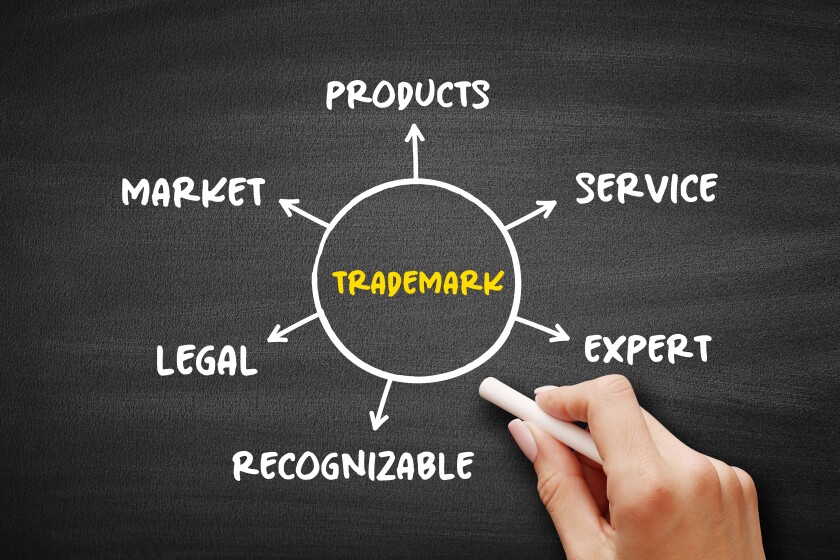The invalidation system for registered trademarks involves the trademark administrative authority declaring invalidation under the legal procedure for registered trademarks if it violates the provisions of the Chinese Trademark Law and should not be registered. The invalidation of registered trademarks can be divided into two types:
Invalidation due to violation of absolute causes; and
Invalidation due to violation of relative causes.
Relative causes are more common, mainly including infringement of well-known trademarks, violation of agency representative relationship, wrong geographical indications, identical or similar trademarks, and infringement of prior rights.
For trademarks that have been transferred, an invalidation based on the aforementioned causes is no different from a general invalidation. However, the respondent to the declaration of invalidity should be the original registrant of the trademark.
Therefore, when an invalidation is filed against a transferred trademark on the basis of bad faith registration on absolute grounds, emphasis should be placed on unearthing evidence of bad faith of the original registrant of the trademark. Particular attention should be paid to this point if a trademark has been registered for at least five years.
If the original evidence of a registrant’s bad faith is relatively weak, then a breakthrough can be sought from the transferee’s transfer records and trademark registration, the registration records of the original registrant’s affiliates, etc.
Consideration of bad faith registration by the original registrant
When filing a declaration of invalidation against a transferred trademark based on bad faith registration on absolute grounds, the focus should be on analysing the bad faith of the original registrant of the trademark. Consideration of the original registrant’s bad faith needs to be assessed in the following ways.
Firstly, it is necessary to consider whether the original registrant has hoarded a large number of other trademarks, taking into account the number and categories of registered trademarks applied for. If the original registrant has applied for many trademarks or the marks involve various categories, it may be found that there is a situation of bad faith application, such as unduly occupying public resources.
Secondly, under the premise of considering the number and proportion of the trademarks, it is also necessary to factor in the distinctiveness and popularity of the trademarks being registered. If the original registrant frequently registered those trademarks with distinctiveness and popularity, there is a certain probability that the original registrant will harm the public interest, and this constitutes a bad faith application.
It is also necessary to assess the original registrant’s business scope and normal needs. If the original registrant’s business scope has nothing to do with the trademark, or there is no reasonable demand for the trademark in its normal business, then its motive to register the trademark can be doubted.
Generally, the standard for the number of malicious applications by the original registrant is more than double digits.
However, if the number of applications filed by the registrant in bad faith is insufficient, but the trademark being registered has a certain degree of distinctiveness and popularity, the focus at the invalidation stage will not be limited to the number itself.
To sum up, when invalidating a transferred trademark based on a malicious registration on absolute grounds, it is necessary to take the above factors into consideration to assess the malice of the original registrant.
Other factors that can be considered
When the evidence of bad faith of the original registrant is relatively weak, a breakthrough can be sought from:
The transferee’s transfer records and trademark registration;
The registration records of the original registrant’s affiliates; and
Collection of any defects at the original registrant’s trademark registration stage.
Considering the transferee’s record of transfer and trademark registration
When the evidence of the original registrant’s bad faith is not obvious enough, the transferee’s transfer record and trademark registration as a whole can be considered.
In the author’s opinion, consideration of the transfer of a trademark and the registration of the transferee during a judgment process reflects the judicial authorities’ attitude towards safeguarding the rights and interests of the original right holder and combating malicious registration behaviour. By comprehensively considering the situation of all parties, there will be a greater inclination at the judicial stage to ensure fairness and justice, and that trademark rights and interests are effectively protected.
Considering the registration records of the original registrant’s affiliates
In addition to searching for evidence of the original registrant’s bad faith, it is also necessary to dig deeper into the registrations of the original registrant’s affiliated companies.
If multiple affiliated companies are found to have registered infringing trademarks one after another, or if these companies are substantially related to the original registrant, this may imply that the original registrant is using the affiliated companies to circumvent legal restrictions.
Searching for defects at the registration stage
To determine whether the disputed trademark was registered by deception or other improper means, it is also necessary to consider whether the original registrant of the trademark has submitted forged or altered documents in a manner that fictionalised the facts or intentionally concealed the true situation in order to obtain trademark registration.
The need for a robust approach to combating trademark infringement
When faced with a registered trademark that has been transferred, the right holder is often unable to support the mark due to its long registration period and the difficulty in sourcing evidence. Infringers are thus unscrupulous in using the aforementioned registered trademarks in infringement behaviour.
In the authors’ view, under such circumstances, we still need to resolutely combat infringement and try to seek a breakthrough by using the above methods, and even seek trademark transfer through the recognition of well-known trademarks, thereby protecting legitimate rights and interests, and avoiding further losses.











